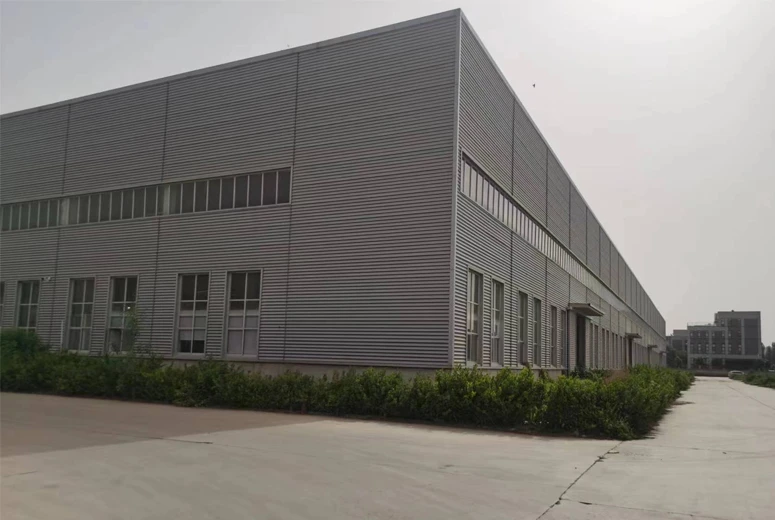Exploring Affordable Options for Used Roll Forming Machines in the Market
The Evolution and Benefits of Used Roll Formers in Manufacturing
In the diverse landscape of manufacturing equipment, roll formers play a crucial role in the production of metal components. These machines shape metal sheets into various profiles through a series of rollers, making them indispensable in industries such as construction, automotive, and consumer goods. With the continual push for efficiency and cost-effectiveness in production, the option to purchase used roll formers has become increasingly appealing. This article explores the evolution of roll forming technology, the benefits of investing in used machinery, and key considerations for manufacturers.
The Evolution of Roll Forming Technology
Roll forming has roots that extend back to the early 20th century when manufacturers sought more efficient methods to produce metal profiles. The technology has significantly evolved over the decades, transitioning from manual operations to sophisticated automated systems. Modern roll formers are equipped with advanced controls and sensors that enable precise adjustments in real-time, enhancing production efficiency and quality.
One notable advancement is the development of variable-speed drives that allow manufacturers to control the speed of production based on material type and desired profile. This flexibility results in reduced waste and higher throughput. Additionally, the introduction of computer numerical control (CNC) technology has revolutionized the design of roll formed products, allowing for complex shapes and interlocking designs that were previously difficult to achieve.
Benefits of Used Roll Formers
Cost-Effectiveness One of the most compelling reasons to consider used roll formers is the significant cost savings they offer. Brand new roll forming machines can come with a hefty price tag, making them unaffordable for many small to medium-sized manufacturers. By opting for used machines, companies can acquire high-quality equipment at a fraction of the cost, thereby maximizing their return on investment.
Immediate Availability Manufacturing schedules can be time-sensitive, and delays in acquiring new machinery can lead to lost revenue opportunities. Used roll formers often have shorter lead times compared to new purchases, enabling manufacturers to ramp up production quickly and meet customer demand.
used roll former

Proven Performance Used roll formers often come with a proven track record of performance, providing potential buyers with insights into their reliability and efficiency. Many vendors offer refurbished machines that have undergone thorough inspections and updates, ensuring they meet operational standards. Moreover, manufacturers can seek out user reviews and testimonials regarding specific models, helping them make informed purchasing decisions.
Sustainability In today's manufacturing environment, sustainability is a key consideration. Purchasing used machinery aligns with eco-friendly practices by extending the lifecycle of existing equipment, reducing waste, and limiting the demand for new resources. This approach not only contributes to sustainable manufacturing but also enhances corporate social responsibility.
Considerations When Buying Used Roll Formers
Despite the many advantages, manufacturers must approach the purchase of used roll formers with careful consideration. It’s essential to assess the condition of the machine thoroughly. This includes checking the maintenance history, any signs of wear and tear, and ensuring that it meets current safety standards. Potential buyers should consider working with reputable dealers who provide warranties and support post-purchase.
Furthermore, manufacturers should evaluate the specific needs of their production processes to ensure that the used roll former can accommodate their intended applications. Compatibility with existing systems and ease of integration are crucial factors to consider.
Conclusion
The decision to invest in used roll formers represents an excellent opportunity for manufacturers looking to optimize their production capabilities while managing costs. As the manufacturing industry continues to evolve, the demand for efficient and cost-effective equipment remains paramount. By understanding the benefits and conducting thorough research, manufacturers can successfully tap into the potential of used roll formers, paving the way for enhanced productivity and sustainability in their operations.
-
High Frequency Straight Seam Welded Pipe Production Line-BzZhou Xinghua Machinery Equipment Manufacturing Co., LTD.|line pipe steel&welded gas pipeNewsJul.30,2025
-
High Frequency Straight Seam Welded Pipe Production Line-BzZhou Xinghua Machinery Equipment Manufacturing Co., LTD.|High Precision&Automated SolutionsNewsJul.30,2025
-
High Frequency Straight Seam Welded Pipe Production Line - BzZhou Xinghua Machinery Equipment Manufacturing Co., Ltd.NewsJul.30,2025
-
High Frequency Straight Seam Welded Pipe Production Line-BzZhou Xinghua Machinery Equipment Manufacturing Co., LTD.|Precision Welding, High EfficiencyNewsJul.30,2025
-
High Frequency Straight Seam Welded Pipe Production Line|BzZhou Xinghua|Precision Welding&EfficiencyNewsJul.30,2025
-
High Frequency Straight Seam Welded Pipe Production Line - BzZhou Xinghua|Precision Engineering&EfficiencyNewsJul.30,2025


